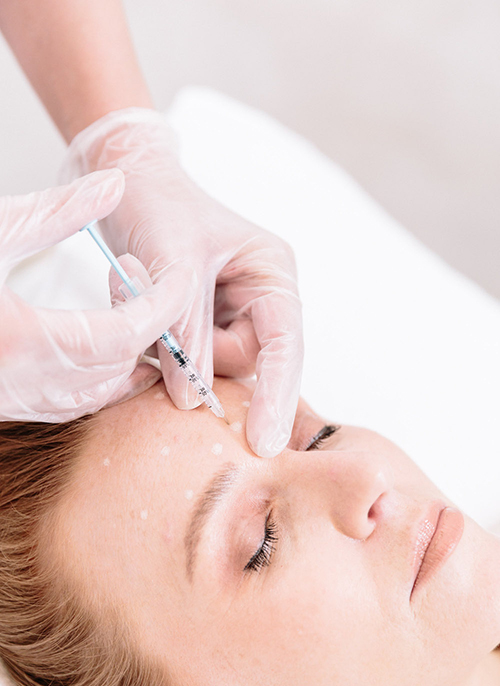Central to our philosophy is intelligence, the pursuit of treatment excellence and the sharing of insights.
IV Therapy & Practice Nurse
Anti-wrinkle injections have gained popularity as a non-surgical cosmetic procedure aimed at reducing facial wrinkles and lines, ultimately enhancing the appearance and boosting self-confidence. This information report explores the benefits of anti-wrinkle injections, delves into the process involved, and highlights how individuals can experience a significant improvement in their overall well-being and quality of life.
Benefits of Anti-Wrinkle Injections
Reduction of wrinkles: Anti-wrinkle injections, primarily comprising botulinum toxin type A, work by relaxing the muscles that cause facial wrinkles, such as crow’s feet, frown lines, and forehead lines. By minimising muscle contractions, these injections can significantly reduce the appearance of wrinkles, resulting in a more youthful and refreshed look.
Non-invasive procedure: Unlike surgical alternatives, anti-wrinkle injections are minimally invasive, involving a series of small injections into specific facial muscles. This approach ensures a shorter recovery time, fewer risks, and minimal discomfort.
Quick and convenient: Anti-wrinkle injections are typically performed in a medical professional’s office and can be completed within a matter of minutes. Patients can resume their daily activities immediately after the procedure, making it a convenient option for those with busy lifestyles.
Natural-looking results: When administered by an experienced practitioner, anti-wrinkle injections can produce natural-looking results. They soften wrinkles and lines without completely freezing facial expressions, allowing individuals to maintain their natural charm and character.
Boost in self-confidence: One of the most significant benefits of anti-wrinkle injections is the positive impact on an individual’s self-esteem. By improving their appearance and reducing visible signs of ageing, people often experience heightened confidence, leading to enhanced social interactions and an overall sense of well-being.
The Process of Anti-Wrinkle Injections
Consultation: The first step in the process is a consultation with a qualified medical professional, such as a dermatologist or cosmetic surgeon. During this consultation, the practitioner assesses the patient’s facial anatomy, discusses their goals, and determines the most suitable treatment plan.
Preparation: Before the injections, the skin is cleansed and prepped. In some cases, a topical anaesthetic may be applied to minimise any discomfort associated with the injections.
Injection procedure: The medical professional uses a fine needle to inject small amounts of the botulinum toxin type A into the targeted facial muscles. The number of injections required depends on the individual’s needs and desired outcomes.
Aftercare: Following the procedure, patients are typically advised to avoid excessive facial movements and to refrain from lying down for a few hours. Mild swelling or redness at the injection sites may occur but usually subsides within a day or two.
Results and maintenance: The effects of anti-wrinkle injections gradually become noticeable within a few days, with the maximum results typically achieved within two weeks. The results can last for several months, after which follow-up treatments are recommended to maintain the desired outcome.
Improved Well-Being and Self-Perception
Enhanced appearance: The primary benefit of anti-wrinkle injections is the significant improvement in one’s physical appearance. By reducing wrinkles and lines, individuals often appear more youthful, rejuvenated, and well-rested.
Increased self-confidence: The positive changes in physical appearance often lead to increased self-confidence and self-esteem. With fewer concerns about visible signs of ageing, individuals feel more comfortable and assertive in social and professional interactions.

